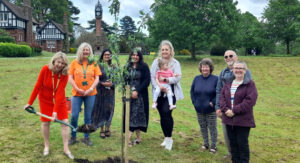‘Dramatic’ increase in UK women choosing to freeze their eggs
A new report from the Human Fertilisation and Embryology Authority (HFEA) has discovered a huge rise in the number of women freezing their eggs in an attempt to preserve their fertility.
The report, which was released this week, found egg-freezing and storage increased from 2,576 cycles in 2019 to 4,215 in 2021 – a 64% rise – while embryo storage also rose. This is more people than ever recorded previously.
One of the reasons behind such a big increase, experts believe, is that during the Covid-19 pandemic women took it upon themselves to preserve their fertility.
Sarah Norcross, the director of the Progress Educational Trust, said: ‘The dramatic rise in the number of egg-freezing cycles could be linked to the pandemic.
‘Restrictions on socialising may have prompted some women to think more about their fertile window and decide to try to increase their reproductive choices.’
Although the number of egg collections increasing, less women decided to donate their eggs for another woman to use, according to the report. There were nearly 1,500 new egg donors in 2019 but this dropped to just over 1,400 in 2021.
In addition to women wanting to freeze their eggs, researchers also discovered a sharp increase, specifically 10%, in people deciding to use IVF to get pregnant. The regulator’s report shows that patients in heterosexual relationships account for about 90% of IVF patients in 2021.
However, the number of people in homosexual relationships using IVF have skyrocketed. The number if IVF patients in female same-sex relationships increased from 1,649 in 2019 to 2,201 in 2021 – a 33% rise – and single parents rose from 2,001 in 2019 to 2,888 in 2021 – a 44% rise.
This means single patients and patients in female same-sex relationships had the biggest increase in IVF use from 2019 to 2021.
Julia Chain, the chair of the HFEA, said: ‘Overall, the new HFEA report paints a promising picture. It shows treatment numbers are back at pre-pandemic levels and thanks to improved clinical and laboratory practice, over time pregnancy rates are increasing.
‘Despite the pandemic being declared officially over, the aftershocks are still being felt as delays across other areas of healthcare prevent some patients accessing fertility services.
‘Our report shows that the average age of IVF patients has increased to 36, around five years older than mothers who get pregnant naturally and these aftershocks could mean that the average age of an IVF patient continues to rise.
‘Although pregnancy rates have increased, the likelihood of success decreases with age. For some patients, this may mean they never get the baby they hoped for and that’s heartbreaking.’
When it comes to success in getting pregnant using the patient’s own eggs, the average overall IVF pregnancy rate using fresh embryos increased from 10% per embryo transferred in 1991 to 29% in 2021.
Patients aged between 18 and 34 had the highest pregnancy rate per embryo transferred at 41% in 2021. Meanwhile, pregnancy rates per embryo transferred increased from 8% in 1991 to 33% for patients aged 35-37, and was 25% for patients aged 38-39 in 2021.
For patients aged 40-42, the pregnancy rate per embryo transferred increased from 6% in 1991 to 16% in 2021. For patients aged 43-50, the pregnancy rate per embryo transferred increased from 1% in 1991 to 6% in 2021.
Live birth rates per embryo transferred have increased from 7% in 1991 to 25% in 2021 for patients aged 35-37 and from 6% in 1991 to 17% in 2021 for patients aged 38-39.
Image: Kelly Sikkema















